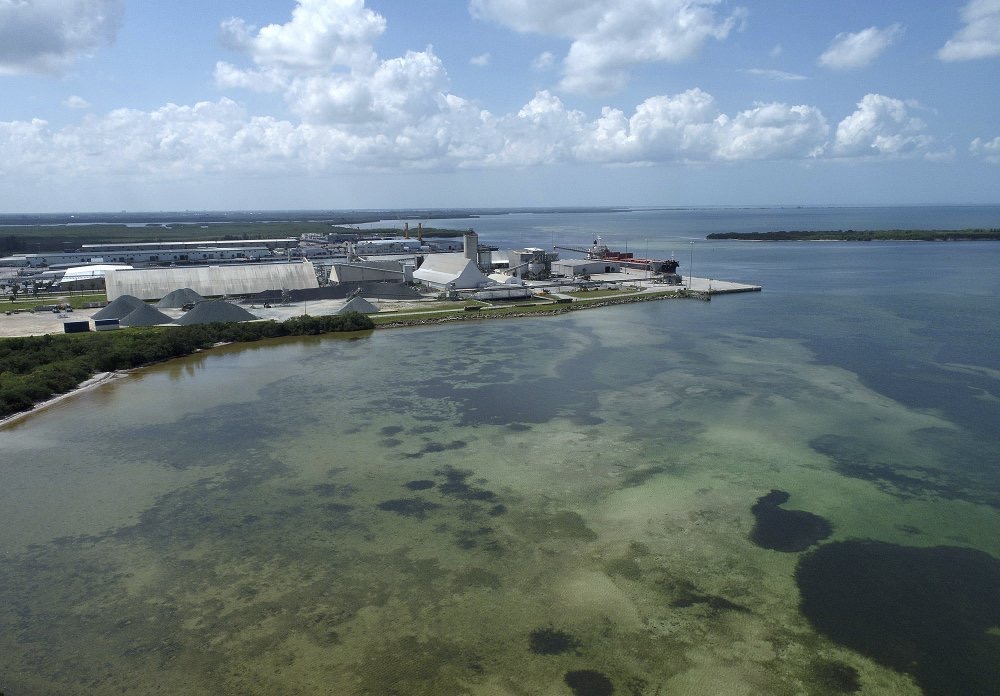
What happens when a whale dies? A shark? What happens when someone on a recreational boat needs to use the bathroom?
Those were some of the questions Tampa City Council member Charlie Miranda asked as the city considered the future of the PURE Project, Tampa’s effort to reuse 50 million gallons of nutrient-laden water it dumps into the bay every day.
“If you take water from the Hillsborough River and drink it before it’s clear enough, it’s nasty as anything else you want,” Miranda said. “You have to purify any water that we drink right now. You have to have an enormous amount of cleanup that goes through it.”
Miranda’s assertion was startling as Tampa faces a confluence of water issues. The city’s water department considers the wastewater it discharges a wasted resource. Tampa’s main water supply is the Hillsborough River. But for about 20 years, the city has been pumping water from Sulphur Springs to meet required minimum flow standards for the Lower Hillsborough River. All that pumping has increased salinity in the Springs to unsustainable levels that could collapse its ecosystem and jeopardize water quality in the river. Added to that is the imminent threat of cyclically recurring and increasingly intense droughts that have already come close to sucking up all of Tampa’s freshwater supply.
Tampa’s main potable water resources are running dry.
Projects examining the need to bolster potable water resources and the desire to reuse wastewater became even more urgent after Gov. Ron DeSantis signed the Clean Waterways Act into law. Under that 2020 mandate, and 2021’s SB 64, Tampa has until 2032 to stop discharging water into the bay or it could face fines around $15,000 a day.
The city’s latest exploratory venture, the Purify Usable Resources for the Environment, or PURE, project, includes a number of options to solve the three main issues of complying with the Clean Waterways Act, protecting against drought and maintaining healthy river flows. But the most talked-about options would treat the discharged wastewater, placing some of it in the aquifer, while the rest goes to the city’s reservoir and to help meet minimum flow requirements in the river. The wastewater could make it into the city’s supply of drinking water. That aspect of the project received massive public backlash from people who didn’t want the city to spend billions on drinking potty water.
“I haven’t had a single person from the public say they want me to support this, and we can see that through emails,” Council member Guido Maniscalco said. “Actually, I haven’t had anybody outside of government or connected to government say they want me to support this. Maybe because the public just doesn’t know.”
So Council member Joe Citro asked the question directly.
“Is the water that we’re putting into the bay cleaner than the water we’re taking out of the Hillsborough River and which we use for our drinking water?” Citro asked.
“Yes, sir. It is,” Tampa’s Sustainability and Resilience Officer Whit Remer said.
The City Council voted 6-1 Thursday to fund more exploratory research and public engagement efforts to address the PURE Project. But the vote wasn’t an easy one. Maniscalco said he struggled. He felt the science was there, but there was a disconnect between information and perception, especially since the ordinance the city was looking at only mentioned two out of several different proposals. One is the option to return wastewater to aquifers and reservoirs. The other would see some of the wastewater sold to regional partners like Tampa Bay Water and some would be put in a deep injection well.
“I will support this today,” Maniscalco said. “But I won’t give a guarantee for the next vote. I want to see what the concepts are. I want to see the science. I want to make sure the public hears from us. … Maybe we need to help people understand what is happening, what is going on. Because this is something that will affect this generation and the next generation. This is not an easy vote. But we know what a drought does to this community. We’ve seen it in the past and we understand the importance of water.”
The set of ordinances moving the project forward passed with the caveat that staff expand the exploratory scope to include a full suite of options, not just two. Bill Carlson, the only no vote, has been one of the most vocal critics of the project. He said he couldn’t support the ordinance as written, but was relieved to see the city reengage and explore all the options that are available.
“Today was a major victory for the community,” Carlson said. “The administration reopened the process to look at all available alternatives including purple pipes and reverse osmosis. They have promised to create an objective analysis and present that to the public for feedback and preferences. Everyone wins when we listen to and trust the community.”
Still, Remer warned not to be fooled by a decade-long time frame.
“Ten years in the engineering world actually is a pretty short time frame,” he said.




2 comments
Corpser9000
February 3, 2022 at 5:38 pm
Hi,
Do you have tine to talk about our lord and savior the great taco in the sky?
tom palmer
February 3, 2022 at 5:55 pm
This issue is complicated. The environmental issue for Tampa Bay is about nutrients that cause algae blooms that threaten seagrass and other natural systems. The potable water issue is about a larger group of chemicals that are unregulated and potentially could affect human health. What this is really about is keeping the growth machine going. Policy makers should be more honest about that.
Comments are closed.